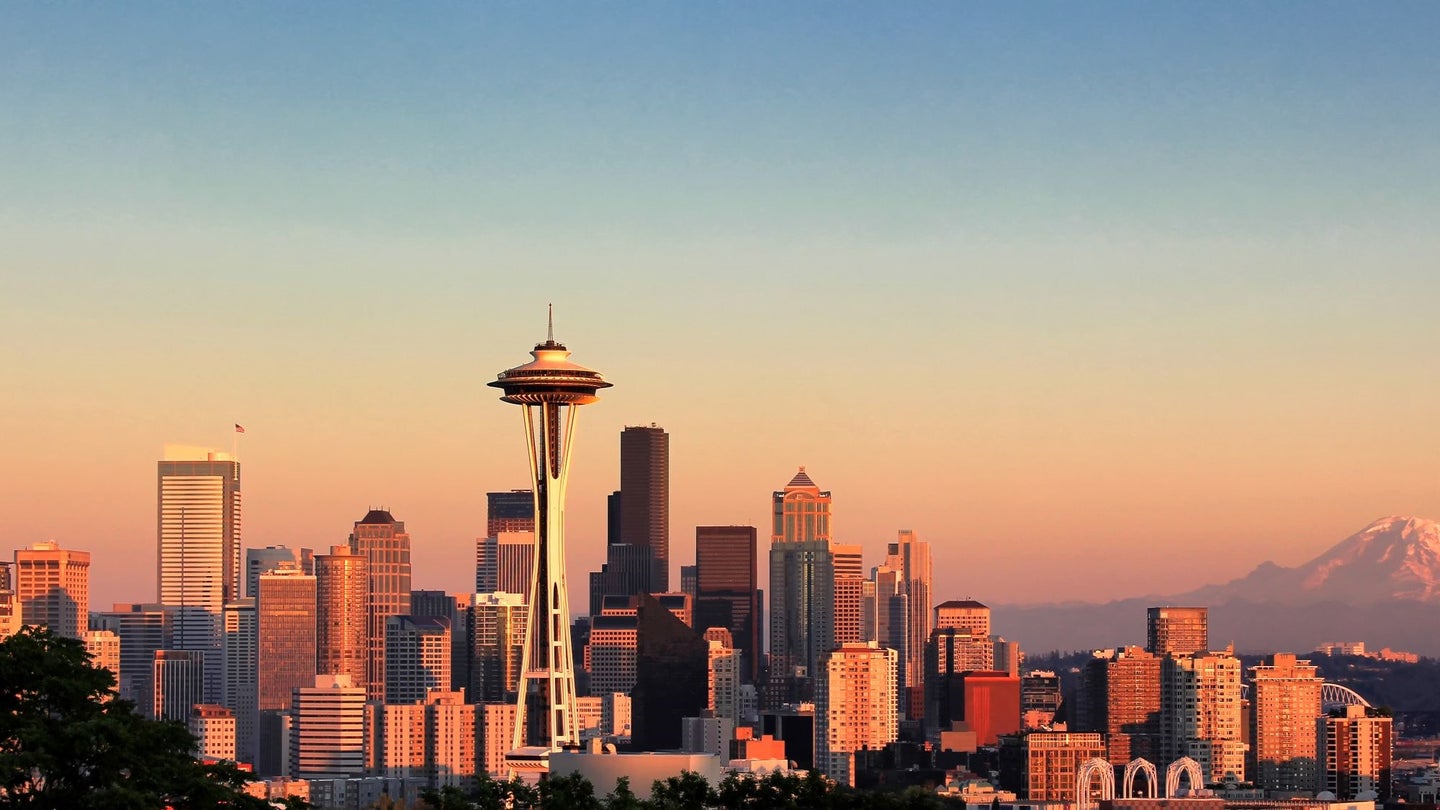Two fault lines near Seattle could rupture in one giant earthquake
Tree ring samples reveal a pair of quakes, or one large one, in Seattle’s geologic history.

Earthquakes occur along fractures, or faults, in the earth’s crust. When one of these cracks in the ground suddenly moves, it can cause a quake. And sometimes a quake at one fault can trigger activity at another, creating one large earthquake—or multiple in quick succession.
Researchers have linked two faults in the Seattle area, and they’ve discovered this geologic duo was responsible for an earth-shifting event more than a millennium ago. In a new study published in the journal Science Advances, researchers analyzed old tree samples from Washington’s Puget Sound region. This paper is one of the few to link the Seattle fault with the Saddle Mountain fault, and the authors say that current hazard models need to be updated to include this data. While experts say residents of the Seattle area don’t need to be particularly alarmed by these findings, this paper is a reminder to be aware of the area’s earthquake risks.
Quakes can set off landslides that uproot trees or tsunamis that drown them. “If those trees are preserved, you can go back and work with them and find out exactly when they died and thus when the earthquake occurred,” says lead study author Bryan Black, a dendrochronologist at the University of Arizona.
Radiocarbon dating showed these dead trees were more than 1,100 years old. Using dendrochronology, the science of analyzing tree rings, the team confirmed that between 923 and 924 CE two faults in the Seattle area produced either one large earthquake of magnitude 7.8, or two sequential earthquakes of slightly lower magnitude. By deciphering the tree rings, Black managed to determine that trees killed near the Seattle fault died around the same time as trees killed near the Saddle Mountain fault. “I could narrow things down and know that this was sometime during the Douglas fir dormant season of 923 to 924, in about a six-month window,” Black says.
[Related: Why most countries don’t have enough earthquake-resilient buildings]
There were two possible scenarios for how this all went down: Either this was one big earthquake that ruptured two separate faults. Or these were two separate earthquakes, with one triggering the other on different faults. “We estimated that the multi-fault earthquake, the one large earthquake scenario, is about three times as likely as the two-earthquake scenario,” says Morgan Page, a geophysicist at the United States Geological Survey, and a co-author of the paper.
It’s not unusual that faults can influence each other to create larger earthquakes. In February this year, Turkey experienced two devastating earthquakes from separate faults in short succession, followed by dozens of damaging aftershocks. In 2016 New Zealand experienced a series of quakes that ruptured at least 21 different faults.
This new finding may lead agencies to recalibrate their hazard models. (Faults are considered potential earthquake sources if they have been active within the past 1.6 million years.) When thinking about risk, it’s important to consider the upper limits for what is possible, says Corina Allen, chief hazards geologist at the Washington State Department of Natural Resources. If these faults together produced a magnitude 7.8 earthquake 1,100 years ago—which is not that long ago on a geological time scale—they may want to calculate how a similar earthquake might play out today, she says.
[Related: Earthquakes can cause serious psychological aftershocks]
It will be especially important for governments at state and local levels to update their models, but individuals should also have plans in mind in case of a large earthquake. Allen says best calculations suggest that there’s a 10 to 15 percent chance of a really big earthquake in Washington—of magnitude 9.0 or higher—within the next 50 years. If you plan for a large quake, she adds, you’ll also be prepared for the ones that are “smaller and more likely.”
While this paper’s discoveries may feel like bad news, it’s really a reminder that earthquakes pose a perennial hazard along the West Coast, Page says. Lots of urban centers are clustered around faults that are only likely to produce earthquakes of small or moderate magnitude. But because of the presence of buildings and people, those can be more devastating than larger earthquakes in remote areas, she says. Rather than focusing only on “the big one,” it’s important to think about the small or moderate earthquakes that could happen underneath you. In a quake-prone area, have food and water on hand, secure your home’s heavy objects, and know what you need to do to protect yourself.
The best thing we can all do is be aware that the risks exist and are not going away, says Allen. Even if we can’t pin down a timeline for the next quake—“geology doesn’t work like clockwork,” Allen notes—we’re always learning more.